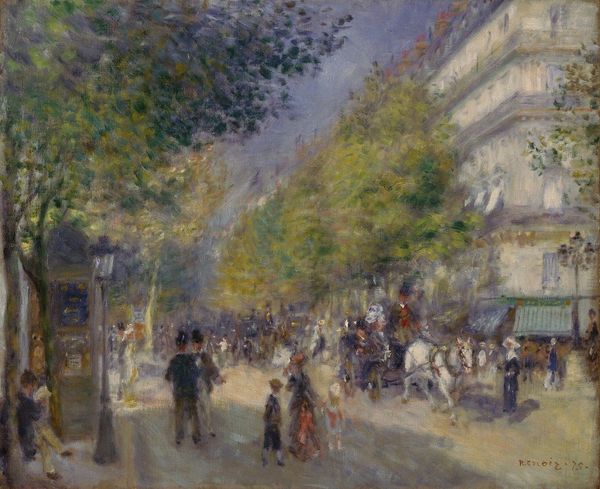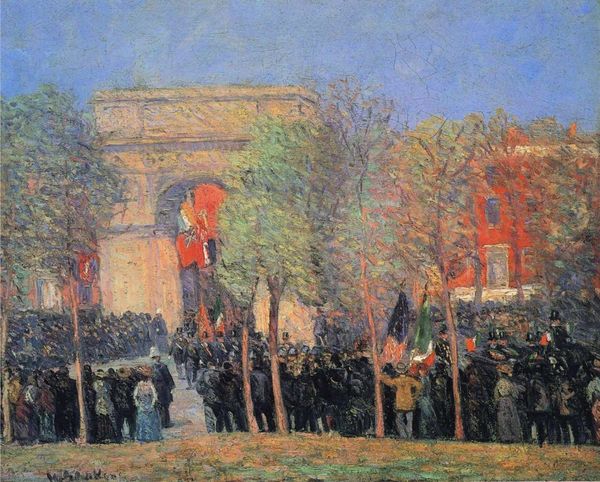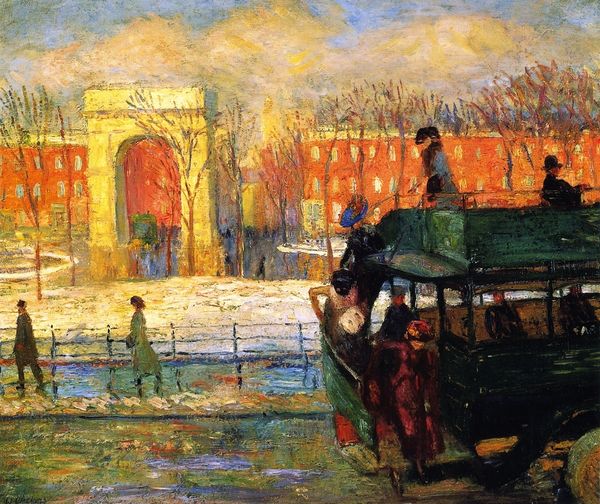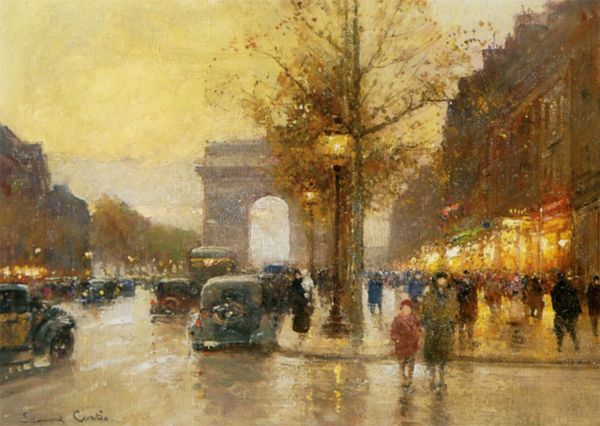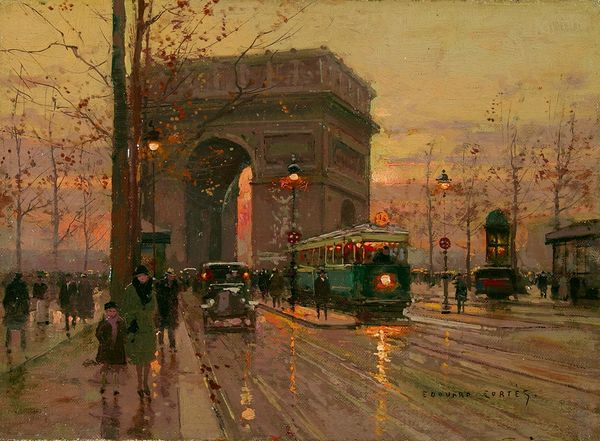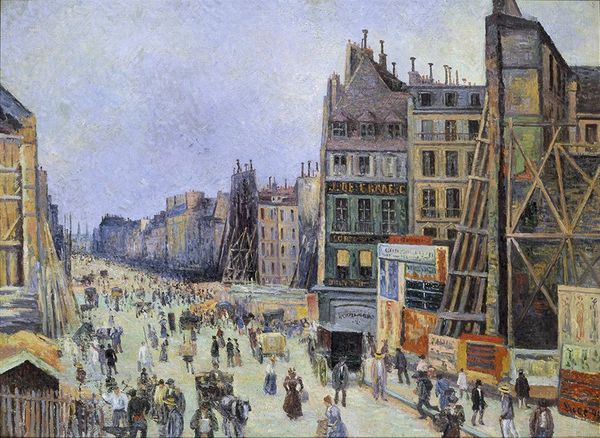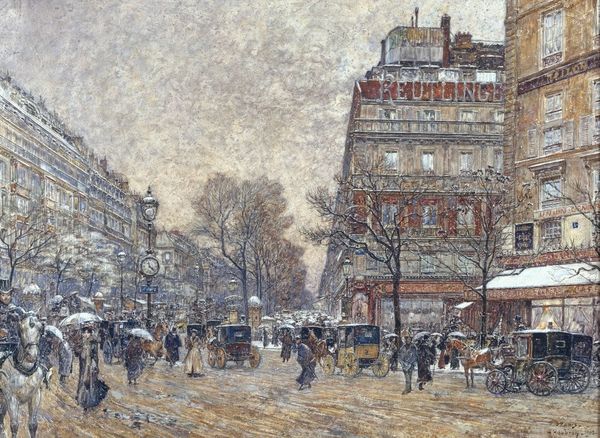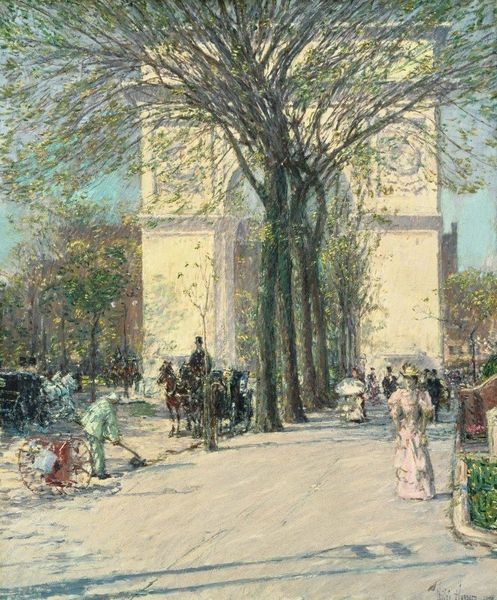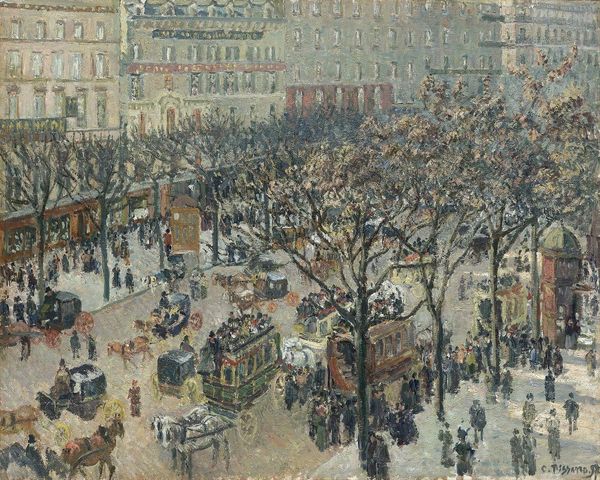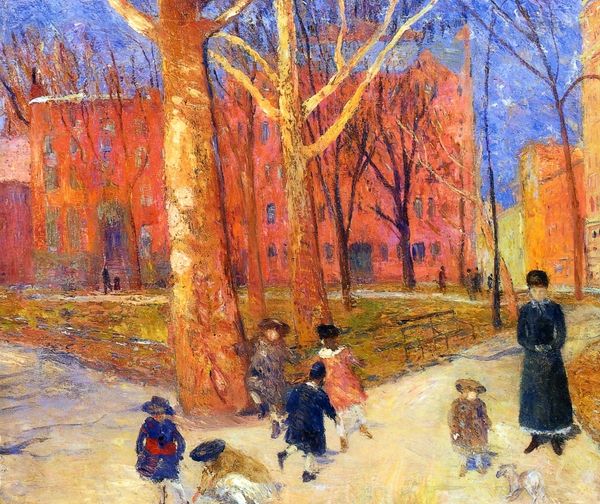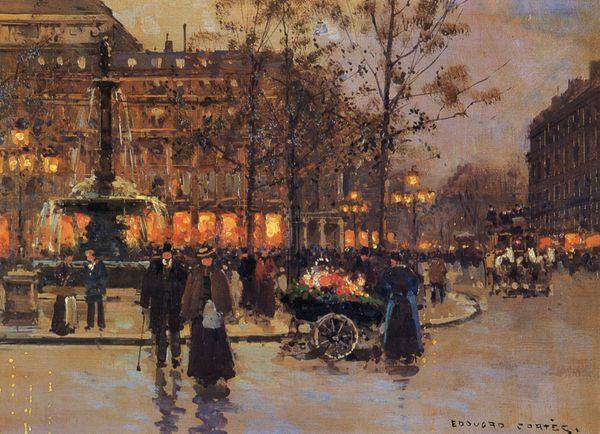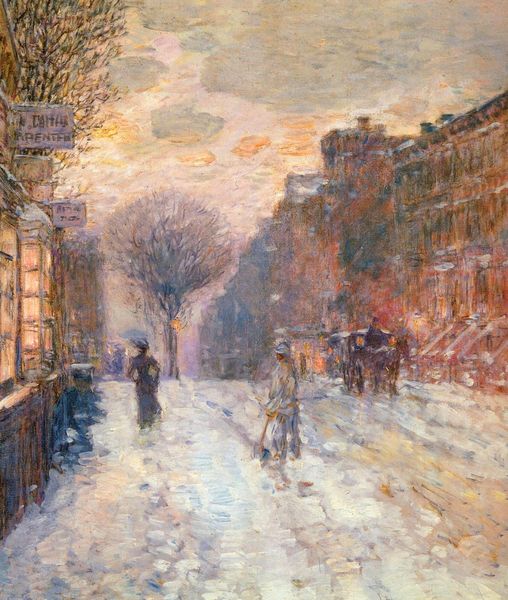
Dimensions: 35.56 x 46.99 cm
Copyright: Public domain
Editor: This is "Washington Square Park" by William Glackens, painted in 1908 using oil paint. It captures a bustling city scene, but there's almost a dreamlike quality to the way he's rendered the details. What social commentary can we read from this work? Curator: Precisely! Glackens, aligning with the Ashcan School, wasn't just painting pretty pictures. He was actively documenting modern urban life, focusing on everyday experiences. This park wasn't just a space, it was a social stage where class divisions, immigrant experiences, and the changing roles of women played out. Consider who has access to this space, who feels comfortable occupying it. Are they all the same? Editor: That’s fascinating. I see people from different walks of life – some well-dressed, others more humbly clothed. The arch in the background seems to frame this diverse group. Curator: Exactly. And who is conspicuously missing or marginalized? That too speaks volumes. The vantage point—perhaps deliberately—emphasizes the energy of a city transforming, yet one cannot avoid questions regarding displacement, poverty, and inequality, which simmer beneath the surface of these "impressions." Editor: So, the beauty of the Impressionistic style kind of softens a much more critical perspective of social inequality? Curator: It is through that "softening", we get the viewer's entry point, right? It subtly invites viewers to confront uncomfortable truths about urban existence during that period. How are we implicated as viewers then, and now? Editor: I never thought of it that way. I was so focused on the technique. Now I understand how to consider the larger implications of such artistic choices. Thanks! Curator: Anytime. These artistic records push us to critically examine both the history and the present moment and ask, ‘Whose story is being told—and whose isn't?'
Comments
No comments
Be the first to comment and join the conversation on the ultimate creative platform.
